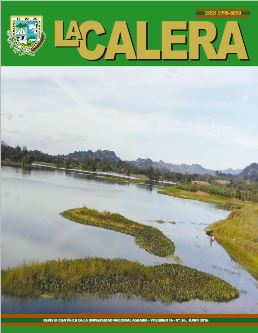Adaptability and agronomic potential of 12 tomato cultivars (Lycopersicum esculentum Mill) under protected conditions Managua, Nicaragua
DOI:
https://doi.org/10.5377/calera.v16i26.5990Keywords:
Genotype, lattice, protected agriculture, agronomic behaviorAbstract
This study was carried out in the Center for Experimentation and Validation of Technology (CEVT) Las Mercedes UNA Located in Managua; the purpose of this study was to generate information on the agronomic performance of 12 cultivars of tomato (Lycopersicum esculentum Mill) produced in net house conditions. The experimental design used was a 3x4m rectangular lattice with two repetitions. The data was evaluated through analysis of variance ANOVA and LSD 95% of confident. The information of ten fruit characters was recorded, seven of them were quantitative and three rest qualitative. The analysis showed that the genotypes evaluated in open field conditions and in greenhouse conditions presented a similar behavior in the case of: polar and equatorial diameter, brix degrees, and number of cores. Whereas the Shanty genotypes CLN3125L, AVTO1032y AVTO1059 gave the highest yields in the greenhouse. Based on the analysis of agronomic performance, the promising genotypes to continue AVTO1032, AVTO1059, AVTO1058, AVTO1078, AVTO1005, AVTO1008 and 1x10).
Downloads
961

